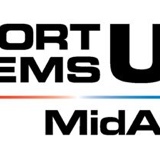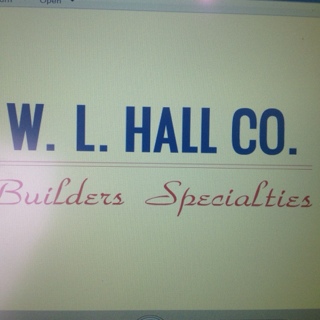Information
-
Project name:
-
Conducted on:
-
Prepared by: Name(s) + Company
HOUSEKEEPING
-
Emergency Action Plan, Medical Map posted and communicated
-
Fire extinguishers (Distributed every 100' or 3000 sq ft, in stands, inspected monthly)<br>(pressure, pin, tamper/pin-holder, hose, physical damage)
-
First aid kits (Distributed, Filled adequately)
-
Adequate lighting (Common areas lit, utilizing task lighting where needed)
-
CO monitoring - heated spaces, indoor fork lifts, idling vehicles
-
Job site free of slips, trips and fall hazards (cords, steps, holes, rebar, frost, wet, etc.)
-
Stairways / walkways clear (cords, material, equipment off to the side or removed)
-
Debris cleared (dump carts used and emptied, etc)
-
Break areas orderly<br> (Food is in covered, lined containers)
-
Floor openings (covered, fastened, labeled)
-
Sprinkler/Natural Gas/Other Utility shutoff located/labeled/accessable
ELECTRICAL / UTILITY
-
Good Cords (look for knicks, cuts, grounds, strain relief, water resistance)
-
Cords protected (non-metallic hangers, lift/cart/walkway traffic, sharp edges)
-
Temporary lighting guarded (light cages, non-metallic hangers)
-
Temporary Electrical panels labeled and covered (checked monthly)
-
GFCI protection utilized on house power
-
Temporary electrical (de-energized, covered, and/or above 8')
-
Electrical Utilities - overhead or buried hazards
HAND AND POWER TOOLS
-
Hand tools in good working order (good condition, good cords, etc)
-
All mechanical safeguards in use (equipment guards)
-
"Line of Fire" considerations (path of tool, material, debris)
-
Tool drop protection used when working above people
-
Proper PPE while in use
MOBILE EQUIPMENT
-
Brakes, lights, signals, and alarms operative
-
Daily inspections filled out
-
Seat belts worn - LULLS, FORK TRUCKS, ETC.
-
Lifts - 100% tie-off (aerial boom), chain/gate secured
-
Crane - protecting people from overhead loads (trained riggers, fly paths)
-
Rigging equipment inspected - tag showing
BARRICADES / GUARDRAILS
-
Guardrails 100% protecting the area where people are not tied off and is above 6'
-
Barricades affixed with proper signage
-
Floor openings planked or barricaded
-
Wall, roof openings covered or barricaded
-
Rooftops/edges protected<br> (100% guardrail, nets, or personal fall protection... signage)
LADDERS
-
Ladders in good condition<br> (stickers, rungs, feet, spreaders, rivets, fiberglass...)
-
Side rails extend 36 inches above landing for access to a level
-
Ladder not being used too close to the edge of a deck or opening (Height of the ladder +4')
-
Proper for job and secure (not on top two correct rungs, not leaning step ladders, facing the correct way between the uprights...) Better alternatives?
-
Step ladders fully open when in use
-
Safe Placement of Ladders (clean/dry surface, placed to prevent leaning, reaching "outside belt buckle")
Excavations and Trenching (4' to 20' depths)
-
Locate underground lines and utilities, traffic control/barricades, proximity to structures and reinforcement
-
Protective systems (Stable Rock, Type A 3/4:1, Type B 1:1, Type C 1.5:1) 2' set-back of spoil piles, trench box above
-
Daily Inspection by competent person for: soil conditions (water accumulation, sloughing, fissures, vehicles/equipment/weight near edge)
-
Restricted access - preventing falls, unnecessary exposure to area (barricades/fencing), vehicles/equipment away
-
Gas monitoring - gasoline/diesel engines, hazardous/toxic fumes, leaking lines or tanks - ventilation or respirators
-
Safe access and egress - every 25' ladders or ramps easily walked with hands in pockets
SCAFFOLDING
-
All scaffolds plumb and level
-
Are adequate sills and base plates being used
-
Are metal scaffold planks installed and sized correctly (extending past end supports or allowing gaps)
-
Wooden scaffold planks (OSHA grade, 6" to 12", secured)
-
Are gates and guardrails including top and mid rail in place
-
To protect from falling objects, are toe boards or area barricaded below
-
Is there a scaffold tag and has it been inspected daily
-
Is there a safe access ladder, steps or equivalent means for safe access to the scaffold<br> (no greater than 24")
-
Is the scaffold rated for the proper weight capacity
FIRE PREVENTION
-
Are hot work permits in order if necessary
-
Is a fire watch monitoring the area (fire extinguisher for task nearby)
-
Control of sparks/slag produced
-
Propane tanks outside - barricaded from vehicles - labeled (flammable, no smoking, fuel type)
-
Compressed gas cylinders (secured, upright, protected from damage, 20' separation or 5' vertical barrier)
PPE
-
Class II High visible clothing in use when needed (around mobile equipment) - what % of workers?
-
Eye protection (worn and adequate for the work activity) - what % of workers?
-
Gloves (worn and adequate for the work activity) - what % of workers?
-
Hard hats worn 100% ?
-
Face shields (used where required)
-
Welding hoods being worn in conjunction with hardhats safety glasses
-
Respirators and masks utilized for appropriate tasks (fit, training, proper use/protection, storage/cleaning)
-
Safety harness and lanyards utilized properly with adequate anchorage points (5000 lbs)
NOTES
-
Upcoming work planning (cranes, excavating/trenching, fall protection, roof planning, hot work, )
-
Specific requests
-
Injuries or losses since last audit
-
Topics for next safety meeting...











